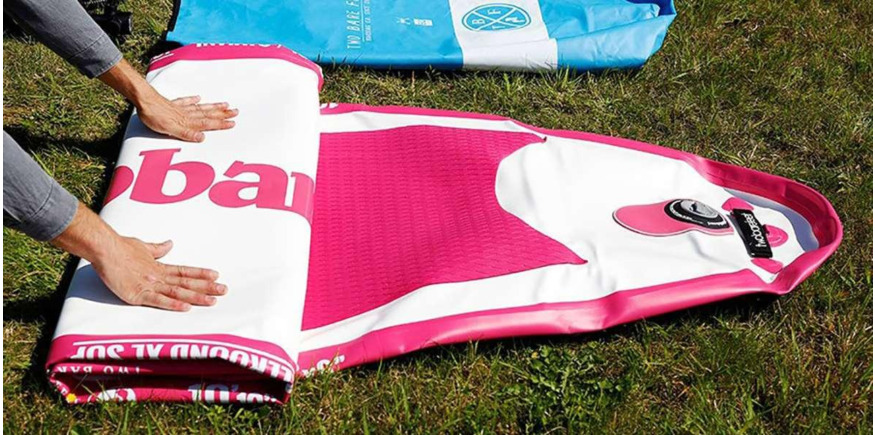Unfortunately there comes a time every year when you’ll need to pack away your inflatable paddle board – especially in the UK’s questionable climate.
Storing an inflatable SUP correctly will do wonders for its longevity. However, neglecting to create the optimum storage environment could lead to serious (and even irreversible) damage to your board.
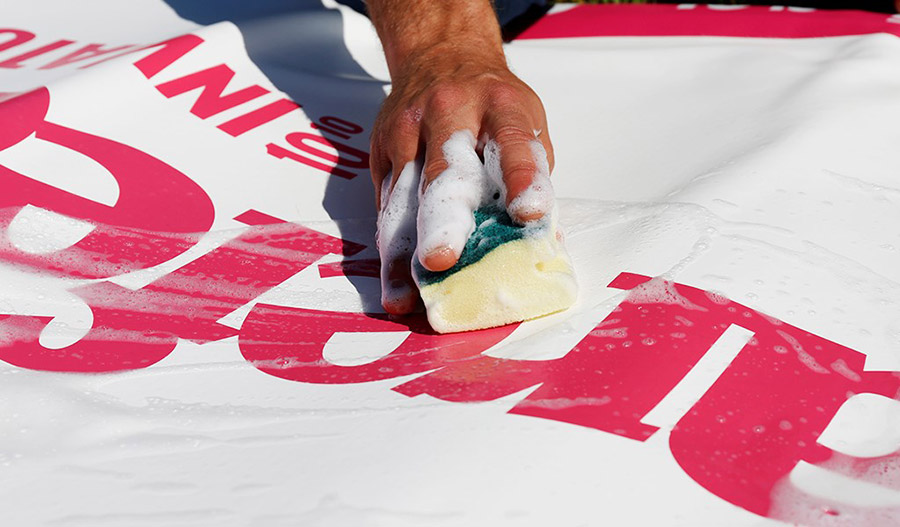
Before storing your SUP, ensure that it is completely clean
Make sure your paddleboard is clean and dry
Before you stow your SUP, be sure to fully clean and dry it – especially if you’ve been out in the sea. If allowed to stay on your board for an extended period, sea salt will form into a crust and damage the board. Avoid using any harsh cleaning chemicals – rinse it down with fresh water and use a mild soap.
Once you’ve got your board sparkling clean, it is essential that you ensure it is completely dry, especially if you plan to store it in its bag. The board exterior can easily be dried with a towel; if any moisture gets inside it can be dried by opening the air valve and blowing air inside with a pump or vacuum.
If you store it damp, you are inviting mould to grow. This can cause irreversible damage which ruins the quality of your board, and create a pretty unpleasant smell, which no one wants.
Whilst we’d advise you not to store your board somewhere cold, if temperatures do drop below 0°C, any water still inside your paddleboard will freeze, causing internal damage.
Avoid storing your board outside
Prolonged exposure to the elements will take its toll on your iSUP. While wind and rain can cause significant damage to the exterior of your board, sunlight is the main concern.
Storing your paddleboard in direct sunlight is a huge no-no. Even when heading down to the water for a day, we’d recommend you keep your board in the shade until you’re ready to use it. Not only will sunlight do an excellent job of fading the beautiful colours and design on your board, it can also cause damage to the seams – which can be costly to fix.
For long-term storage, always try to find an indoor solution. Choose somewhere away from direct sunlight and under a controlled temperature. Your board will be safe in anything from 5°C– 30°C.
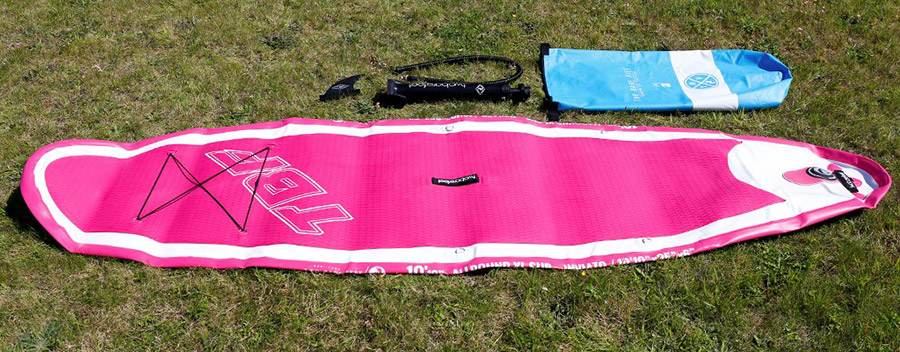
Your paddleboard should always be stored deflated.
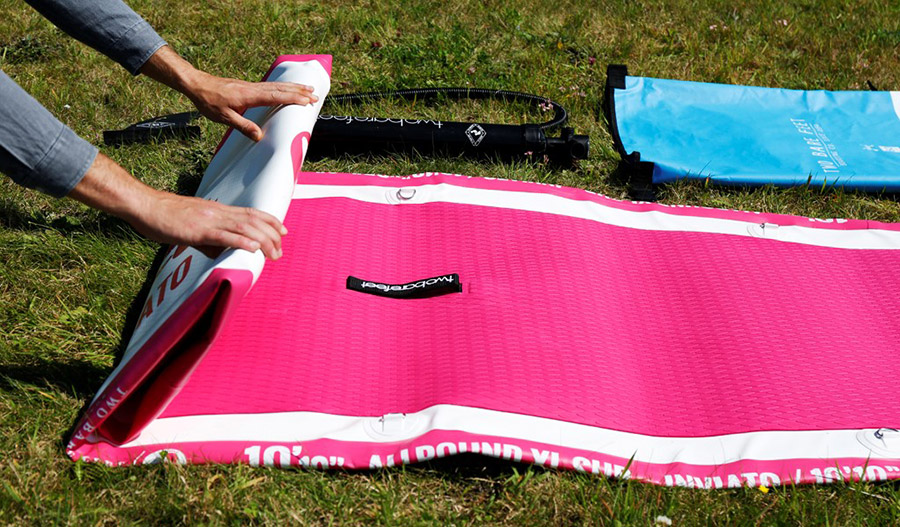
Ensure that your board is always folded - never rolled.
Should you store your board inflated or deflated?
We’d strongly recommend that you store your paddleboard deflated.
After you’ve fully deflated, try to loosely fold your SUP. Be sure that you do fold instead of roll. Rolling an inflatable paddleboard too tightly will cause creases and weaken the seams, which can lead to holes forming.
When folding your board, choose a soft area of ground such as grass. If you fold SUP on concrete or gravel you run the risk of damaging the exterior.
Ensure that your folded board is stored out of the way, so you don’t have to repeatedly move it when not in use. Other items stored in your garage could cause damage, so store the board separately, out of the way. Also be sure to avoid contact with any chemicals used or stored in your garage.
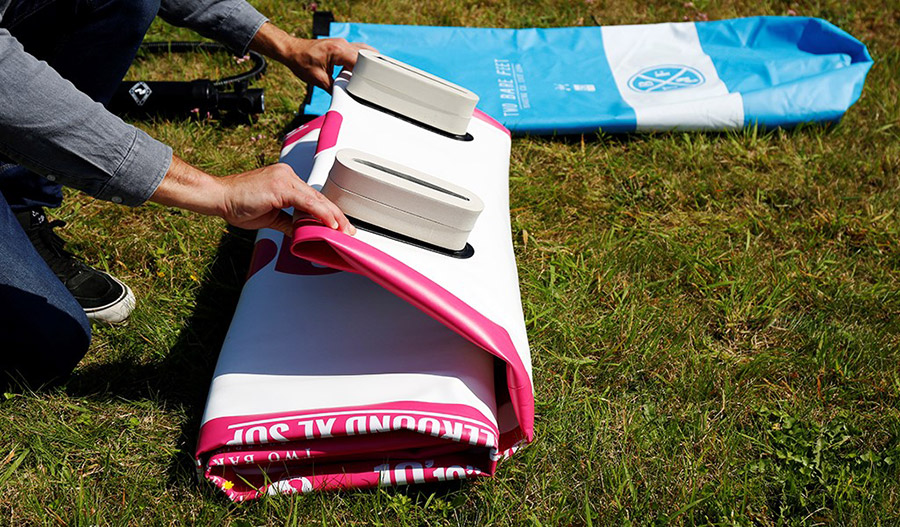
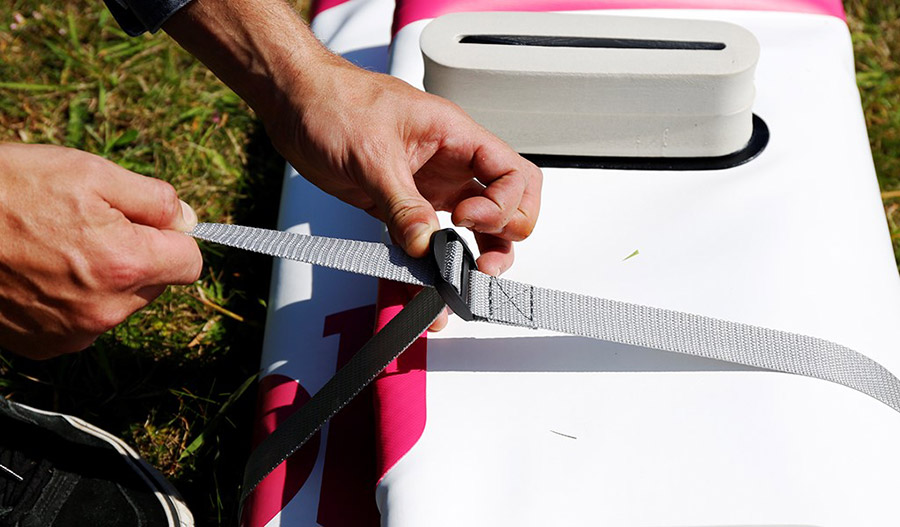
Once your board is fully folded, it can be secured with the adjustable straps.
What should you do with the fins while storing your paddleboard?
When putting your SUP into storage over the winter period, it’s advisable to remove the detachable fins –this avoids the risk of them breaking or getting stuck in the fin boxes
Removing the fins also gives you the opportunity to fully clean them, which is especially important if you use your iSUP on the open sea. As with the board exterior, a build-up of crystallised sea salt could result in physical damage, making the fins increasingly difficult to remove in future.
If you attempt to store a board with the fins in place, they will be vulnerable to accidental bending or even breakage. A bent fin will make steering your paddleboard increasingly difficult, whilst a broken fin can be costly to replace.
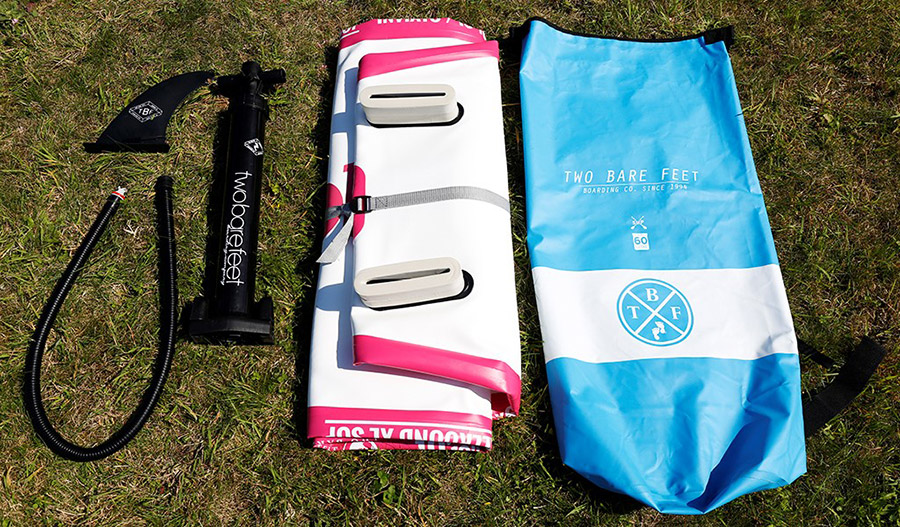
Your board's fins must be protected by the soft foam protectors when in storage.
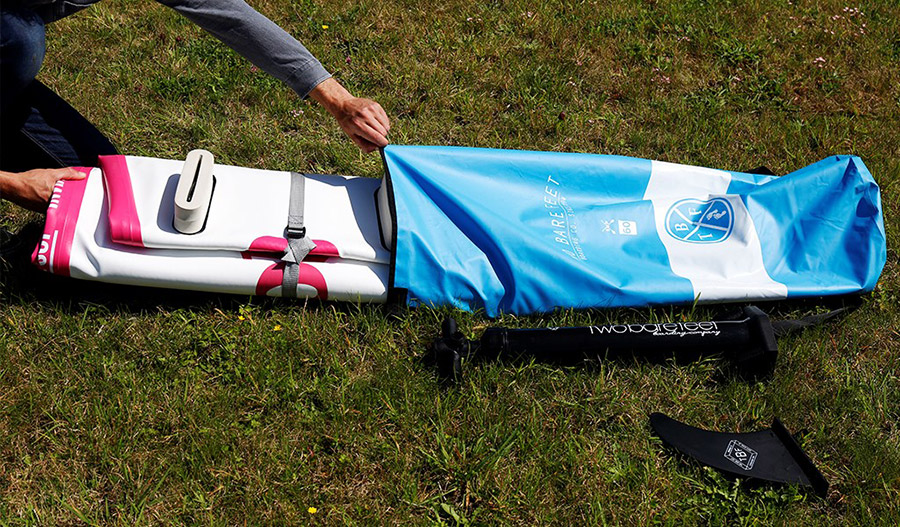
When folded, your paddleboard will fit easily into it's dry bag.
A good quality paddleboard will always come with soft foam fin protectors. Use these protectors to house the moulded side fins and store your board with the fins facing upwards to prevent them from getting bent.
Following our tips and tricks on best paddleboard storage methods will ensure that, come springtime, your board will be in perfect condition – ready to get back on the water!
Still unsure on the best way to store your inflatable SUP? At Two Bare Feet, we’re not short of enthusiastic paddleboard specialists who will be glad to answer your queries! Please don’t hesitate to get in touch with a member of the team or alternatively refer to our comprehensive SUP user guide.

